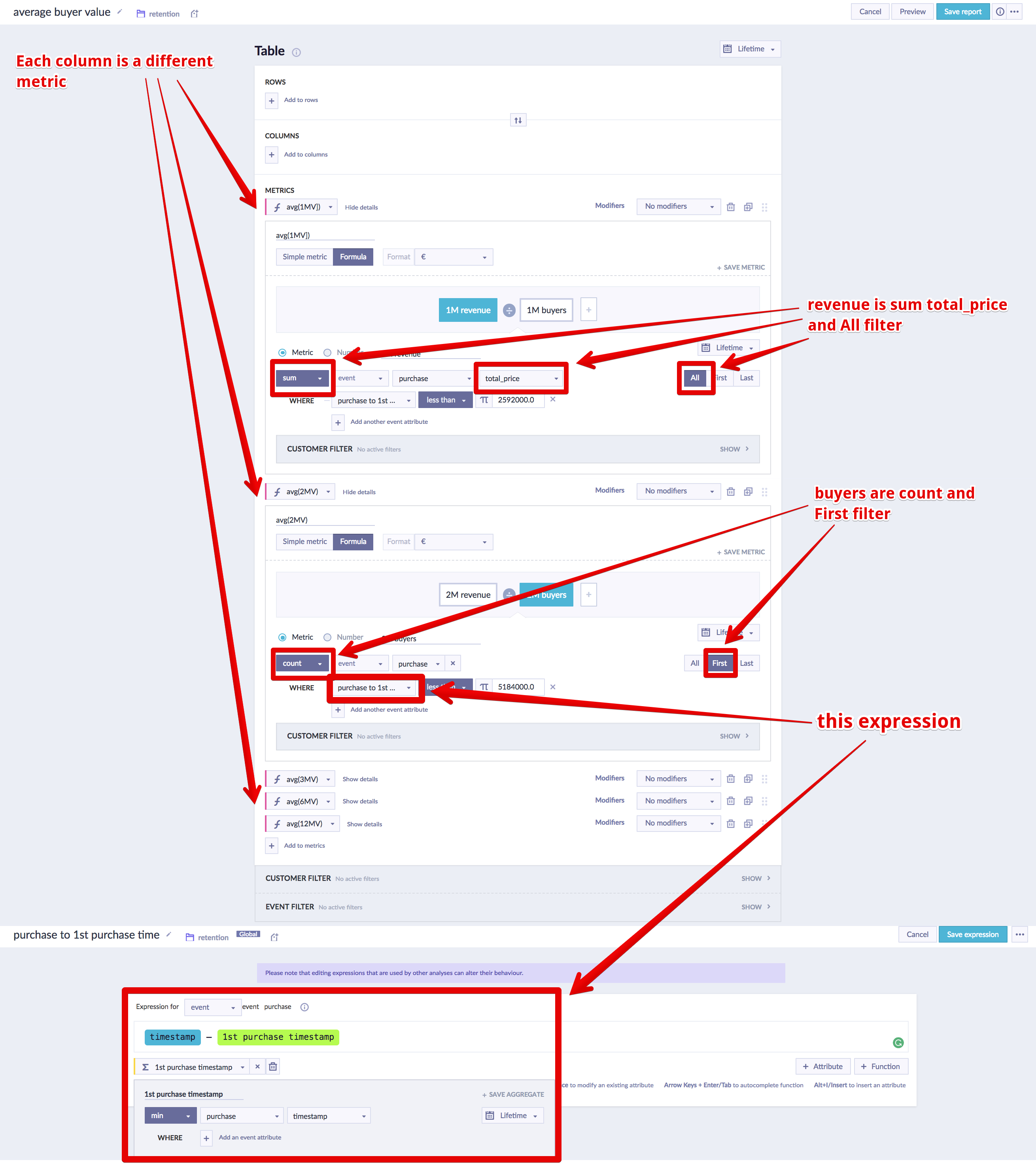Average Buyer Value
This guide will help you understand
- What is average buyer value
- Why you should calculate it
- How to calculate it using Bloomreach Engagement
What is Average Buyer Value
The Average Buyer Value is one of the best indicators reflecting the well-being of your business. This calculation enables business owners to understand the average monetary value of their customers. In other words, it reflects the average revenue per customer during a specific period of time. By adding this metric to your analytics, you will be able to determine the ratio between the amount of money spent to acquire your customers and the cumulative revenue generated by the same customers. In case you spend more money on customer acquisition than these customers bring to your business, act immediately unless you are in the growth stage trying to acquire as many customers as possible.
Why you should calculate it
In addition to the cohort or repurchase analyses, the Average Buyer Value can provide another view of the quality of your retention. The reason why you should care about retention is that it enables you to project the expected revenue inflows for the future periods. This allows you to plan your business roadmap more effectively. In addition, if you combine the insights from the ABV with the Recency/Frequency/Monetary Analysis you can easily analyze which customer segments are bringing you the highest amount of revenue so you can narrow your retention efforts to this segment. There are multiple approaches to calculating the ABV. The one used below is a report where each column represents a separate metric based on various time periods. The Average Buyer Value is calculated in the following way, it counts the amount of revenue accumulated in the months 1,2,3,6, and 12 which is then divided by the number of buyers within the same period.
Insights
Your average buyer value should be going up. If it is remaining relatively flat, you have a retention problem.

How to calculate it using Bloomreach Engagement
Open Analysis > create a report using the steps below.

Pay attention to the fact that revenue is calculated by summing up the purchase total price. This is then divided by count/event/purchase (First), which counts the number of purchases, but only considers the first purchase per customer, so it effectively counts the number of buyers.
The expression values are in seconds and they calculate how many seconds it took for the purchase to occur from the customer's first-ever purchase.
- 1 month - 2 592 000 seconds (30 days x 24 hours x 3600 seconds)
- 2 months - 5 184 000 seconds
- 3 months - 7 776 000 seconds
- 6 months - 15 552 000 seconds
- 12 months - 31 104 000 seconds
For the running aggregate "1st purchase timestamp" used in the expression, make sure you select the following option: "includes only events preceding the event where it is used, excluding the event itself."
In order for this to work properly, you need 12 months of purchase data.
Updated about 2 years ago
